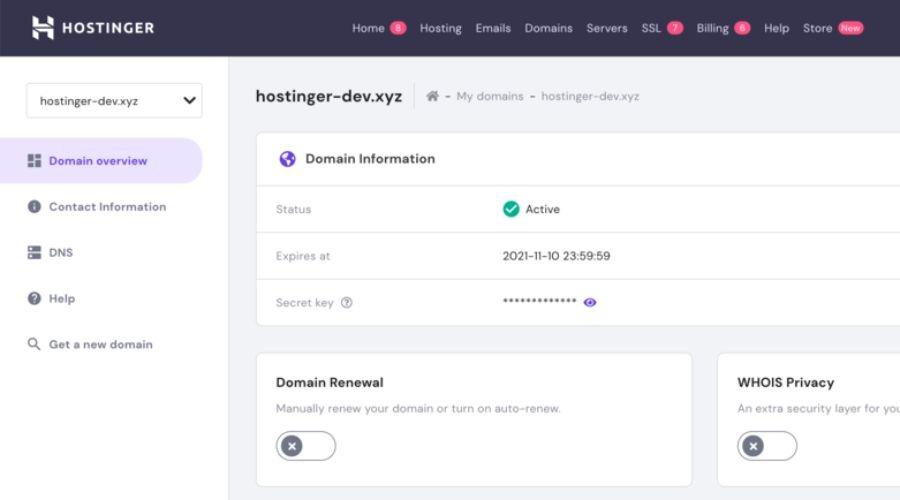A domain transfer is a process of moving a domain name from one registrar to another. There are several reasons why someone may want to transfer their domain, such as better pricing, better customer service, or more features. However, domain transfers can be a complex and time-consuming process if not done correctly. This is where a domain transfer guide comes in handy. A domain transfer guide typically includes step-by-step instructions on how to transfer a domain, including preparing the domain for transfer, unlocking the domain, obtaining an authorization code, selecting a new registrar, initiating the transfer, and verifying the transfer. The guide may also provide tips on how to avoid common pitfalls during the transfer process, such as incorrect contact information or a domain name that is too close to expiration. Following a domain transfer guide can help ensure a smooth and successful transfer, with minimal downtime for the website or email associated with the domain. It can also provide peace of mind knowing that the transfer is being handled correctly and securely.
List Of Some Of The Domain Transfers

There are many domain transfers that can take place depending on the specific circumstances of the domain owner. Moreover, you can also check the transfer domain to a new owner, transfer domain free, domain transfer offer. Here is a list of some of the most common domain transfers:
1. Registrar Transfer
This is the most common type of Domain Transfer Guide and involves moving a domain name from one registrar to another. This could be because the current registrar is not providing the desired level of service, or because the owner has found a better deal elsewhere.
2. Ownership Transfer
This type of transfer involves transferring ownership of a domain name from one individual or organization to another. This could be because the original owner is selling the domain, or because it is being transferred as part of a merger or acquisition.
3. Domain Consolidation
This type of transfer involves consolidating multiple domain names under one registrar or account. This is often done for ease of management or to take advantage of bulk pricing discounts.
4. TLD Transfer
This type of transfer involves moving a domain name from one top-level domain (TLD) to another. For example, moving a domain from .com to .net.
5. DNS Transfer
This type of Domain Transfer Guide involves moving the domain’s DNS hosting from one provider to another. This could be because the current provider is not providing the desired level of service or because the owner wants to take advantage of better features offered by another provider.
6. CC TLD Transfer
This type of transfer involves moving a domain name from one country-code top-level domain (CC TLD) to another. For example, moving a domain from .co.uk to .com.au.
7. Domain Renewal Transfer
This type of transfer involves transferring a domain name from one registrar to another for the purpose of renewing the domain. This is often done to take advantage of better pricing or promotions offered by the new registrar.
8. Redemption Period Transfer
This type of transfer involves transferring a domain name that is in the redemption period to a new registrar. The redemption period is a 30-day period after a domain has expired during which the domain can be redeemed by the original owner for a fee.
9. Domain Name Server (DNS) Change
This type of transfer involves changing the DNS servers associated with a domain. This can be done for a variety of reasons, such as changing hosting providers or improving website performance.
10. Privacy Protection Transfer
This type of transfer involves transferring a domain name that has privacy protection enabled to a new registrar. Privacy protection is a service that hides the contact information of the domain owner from public view. These are just some of the types of domain transfers that can take place. Each transfer has its own set of requirements and procedures that must be followed to ensure a successful transfer. It is important to consult with the new registrar or a domain transfer guide to ensure that all steps are followed correctly and that the domain is transferred safely and securely.
Conclusion
In conclusion, a domain transfer guide can be a valuable resource for anyone looking to transfer their domain. It provides step-by-step instructions and tips on how to ensure a smooth and successful transfer while minimizing downtime and avoiding common pitfalls. Whether it’s a registrar transfer, ownership transfer, or another type of transfer, following a domain transfer guide can help ensure that the transfer is handled correctly and securely. It is important to carefully research the new registrar and to follow all steps in the transfer process to ensure a successful outcome. Moreover, you can also check the official website of Feedhour and Hostinger to know more about the Domain Transfer Guide.















